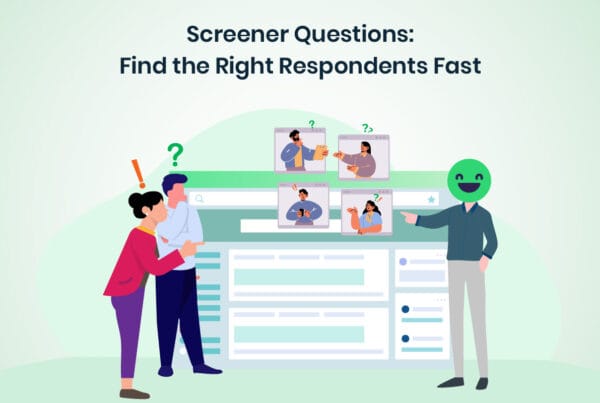Colleges must prioritize student retention in order to run their operations. It is a crucial indicator of an institution’s performance since it shows how well it can assist its student body.
High dropout rates constitute a multidimensional concern, affecting more than the financial viability of a university. They also effect their reputation and students’ academic results.
Prominent academic administrators by conducting a college satisfaction survey investigate efficient retention tactics to enhance student satisfaction and prosper in a progressively cutthroat educational environment.
What is Student Retention?
The term “student retention” is broad. It describes the proactive measures used by educational establishments to reduce dropout rates and maintain student brand loyalty.
The techniques go beyond methods of instruction. They encompass all points of contact with the institution and the state of students’ experience with the brand.
Enhance student retention with piHappiness.❤️
Discover insights with our College Satisfaction Surveys!
It is vital to concentrate on measures that provide precedence to that experience and enable the acquisition of educational resources, assistance, and the handling of monetary and managerial concerns.
Why Student Retention in Higher Education is Important?
Successful universities protect their income sources, build their brand, and draw in new students by keeping their current student body.
Financial Implications for Colleges and Students
Remaining enrolled increases the likelihood that a student will graduate and avoid the financial traps of taking on debt in the absence of a degree. Retaining current students is more economical for institutions than finding new ones.
The Advantages of Greater Retention Rates for Society
High retention rates help create a workforce that is better educated, which is essential for innovation and economic growth.
Reduced rates of poverty and unemployment are advantageous to communities. These numbers decline as more students complete their college degrees, increasing the earning potential of community members.
Effective Strategies to Boost College Student Retention
For educational institutions, one of the biggest concerns is student retention. This is due to the fact that there is no assurance that students will remain at a certain institution for the duration of their educational journey, even after enrollment and the start of studies.
Investing in strategies done after conducting a college satisfaction survey can increase retention rates, lower dropout rates, and guarantee students’ continued attendance at your institution is therefore essential.
Strategies to Improve the Rate of College Student Retention
Effective academic advice, extensive support services catered to the requirements of each individual student, strong student financial aid, and well-maintained campuses are all examples of strategies to increase retention rates.
Maintaining a well-kept campus promotes student enrollment and advancement toward graduation.
Campus Upkeep is Important for Retaining Students
Facilities and campus design are two aspects that are frequently overlooked that affect student retention. Lower academic performance is linked to ill-maintained facilities, according to the Environmental Protection Agency (EPA).
Facilities maintenance must be done on time by university maintenance departments. Because of the size of a typical college campus, well-run building departments use a systematic strategy to maintain organization and promptly finish maintenance orders.
The use of technological apps by staff members to carry out preventive maintenance on campus buildings and obtain resources when needed can have a significant impact on student retention.
The Effectiveness of Engagement in Student Retention Strategies
Scholarly investigations reveal a robust association between academic accomplishment and student engagement.
Higher levels of comprehension, critical thinking, and problem-solving abilities are demonstrated by engaged students, and this improves academic performance and grades, which increases retention.
Strategies for Increasing Student Participation
Creating a lively and encouraging learning environment is one of the most effective ways to increase student engagement.
Prominent academic institutions incorporate technology like the use of student feedback apps and active learning approaches to create a dynamic and captivating learning environment.
Adapting lessons to each student’s unique needs through differentiation can boost engagement considerably by considering their varied learning preferences and styles.
Active Learning Approaches
Students are encouraged to participate through problem-solving exercises, group discussions, and hands-on activities. This strategy improves student collaboration and learning results.
These kinds of lectures work better in well-kept spaces. Classes in buildings with large maintenance backlogs might be detrimental to engagement programs. Employees must have the resources necessary to finish maintenance.
Student Involvement in Extracurricular Activities
Participation in clubs, sports, and other activities can enrich the student experience, promoting a sense of belonging and increasing the student retention rate.
These activities develop leadership skills, explore interests, and build networks. Facilities software allows students and employees to schedule space on campus to host club and extracurricular events, practices, and sponsored activities seamlessly.
Colleges often need a comprehensive system to manage campus spaces. Most have substantial buildings, conference rooms, lecture halls, classrooms, auditoriums, art galleries, and outdoor patios. Institutions need an event scheduling system to manage these spaces effectively and allow students to create engaging events there.
With facilities software, students can submit event requests, and Leaders, faculty members, and admins can submit event details to reserve spaces.
Participation of Students in Extracurricular Activities
Engaging in extracurricular activities like clubs and athletics can enhance the educational experience by fostering a feeling of community and raising the rate of student retention.
These exercises foster networking, interest exploration, and leadership development. With the help of facilities software, staff members and students can easily plan campus space for practices, sponsored events, and club and extracurricular activities.
Colleges frequently require an all-encompassing system to oversee campus areas. The majority feature large structures, lecture halls, classrooms, auditoriums, art galleries, and patios outside. For institutions to properly administer these areas and enable students to plan interesting activities there, they require an event scheduling system.
Students can make requests for events by giving student feedback through the facilities software, and administrators, teachers, and leaders can submit specifics to reserve places.
Creating a Community Feeling on Campus
A college’s ability to retain students depends heavily on its ability to foster a strong sense of community on campus. An inviting and inclusive campus community can have a big influence on their choice to attend.
Initiatives to improve campus life, like forums, workshops, and regular activities, can support students in developing a feeling of community.
Why Increasing Student Retention is Important for Students and Institutions?
When leaders in degree-granting institutions across the United States were surveyed by Allen and Seaman (2013), it was found that 73.5% of them cited the low retention rates of online courses as a somewhat important to very critical barrier impeding the adoption of these courses. Poor retention rates cause debt for students with no real return on investment and harm the institution’s and online for-profit education’s reputations (Chiyaka, Sithole, Manyanga, McCarthy, & Bucklein, 2016; Lynch et al., 2010). Consequently, it is critical for both students and institutions to increase student retention.
Increasing student satisfaction is one method that educational institutions address and attempt to promote student retention. Colleges and universities routinely compile data on student satisfaction and use it to enhance their offerings, which raises student satisfaction and retention.
Relation Between Student Satisfaction and Retention
One of the numerous variables influencing student retention is student satisfaction. According to O’Leary and Quinlan (2007), student satisfaction is the reaction to a deliverable’s or service’s quality. Previous studies employing the Noel-Levitz Student Satisfaction Inventory (SSI) discovered that, among roughly 30,000 students at 61 four-year public and private universities, the SSI’s measure of student satisfaction is a poor predictor of retention one year later. Higher rates of student retention were the outcome of satisfaction with both the school environment and student services. For students in their second and third years of study, retention was predicted by satisfaction with academic advising and the caliber of instruction; however, this was not the case for first-year students.
Examples of Research on Student Satisfaction, Retention, and Attrition
Numerous universities employ a variety of strategies to raise their rates of student retention. Combining faculty training, mentorship programs, and orientation programs is one way to use many strategies. In order to increase retention, Allegheny Community College suggested several different strategies. A women’s center was established, freshmen seminars were held to foster relationships between students and teachers, work-study programs financed by the institution were started for on-campus employment, faculty development initiatives were started, and new student clubs were formed.
Non-Returning Student Satisfaction Survey. In order to ascertain the elements that influence withdrawal, this survey is crucial. Students who do not return are surveyed by mail, phone, or online to gather a large amount of quantitative and qualitative information. In the education survey, participants were asked to list all of the reasons they did not continue their education at ACC, as well as whether or not their primary excuse for leaving was temporary or permanent.
A few of the respondents claimed “personal reasons”—like not feeling connected to the college or feeling “invisible” on campus—for not going back to ACC. These are issues that the college can resolve by implementing retention plans that support students’ academic and social integration.
Conclusion
Retention rates are useful and significant, particularly when universities try to address enrollment issues. Getting the correct tools is crucial because most institutions want to see their prospective students succeed and earn their degrees.
With the support of piHappiness, you can increase student engagement and success by giving them insightful student feedback and tailored experiences. You can reframe the college experience with the appropriate software to make it enjoyable, productive, and advantageous for long-term success.








